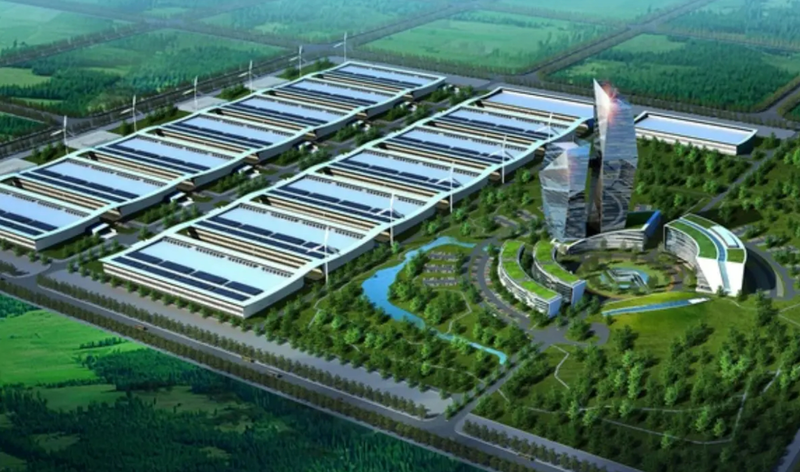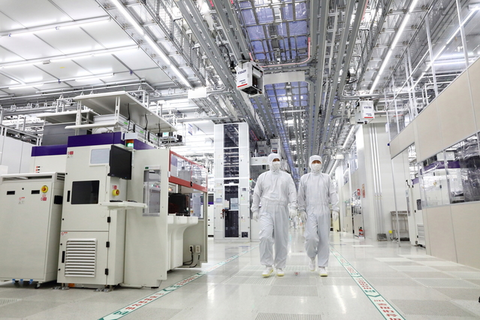China Launches First Large‑Scale AI Data Center on the Tibetan Plateau, Signaling Push to Expand Digital Economy
Input
Modified
Yazhang No. 1 Equipped with High‑Performance Servers and an Eco‑Friendly Cooling System Part of the Dongxisushan Project, Implemented in the Western Plateau Region Eight Computing Hubs to Be Built Nationwide to Realize a Digitally Connected Economy

China’s large-scale computing network project, designed to connect the entire country, has now expanded to the Tibetan Plateau. A newly built, large-scale AI-focused computing center in the Yarlung Zangbo River Basin of Shannan City, Tibet Autonomous Region, has officially begun operations. With this, China has expanded its supercomputing infrastructure beyond traditional northwestern regions, such as Ningxia and Gansu, into Tibet, introducing a high-efficiency data center model that leverages the natural environment and renewable energy sources of the western highlands.
Tibet Enters Fast-Growth Phase of Digital Economy, Says SCMP
According to the South China Morning Post (SCMP) on June 29, Tibet’s first large-scale AI-dedicated computing center, named Yazhang No. 1, held its completion ceremony and officially began operations on June 18 in the Yarlung Zangbo River Basin, Shannan City, Tibet Autonomous Region. The SCMP highlighted that this project marks the first implementation of China’s national “Eastern Data, Western Computing” (Dongshu Xisuan) strategy in the western plateau region, signaling Tibet’s entry into a fast-growth phase of digital economic development.
Launched in 2022, the Dongshu Xisuan strategy aims to shift the massive data processing demands of China’s eastern coastal cities to energy-rich western regions. While previous expansions reached places like Ningxia Hui Autonomous Region and Gansu Province, this is the first time the initiative has extended into Tibet.
A joint investment by Tibet Yazhang Computing Technology Company and Naidong District of Shannan City, the project has deployed 256 high-performance servers in its initial phase, delivering a total computing capacity of 2,000 petaflops (one petaflop equals one quadrillion calculations per second).
Yazhang No. 1, developed in collaboration between the local government and Tibet Yarlung Zangbo Computing Technology Company, offers 2,000 petaflops of processing power during its initial stage, with more than 256 advanced computing servers installed. To minimize its environmental impact, the facility utilizes a high-efficiency cooling system that combines solar power and waste heat recovery, resulting in a Power Usage Effectiveness (PUE) of less than 1.3. This represents a 40% improvement in energy efficiency compared to conventional data centers.

Aligning Eastern Data Demands with Western Resource Capacity
Last year, the National Data Administration (NDA) of China announced plans to leverage the Eastern Data, Western Computing (Dongshu Xisuan) initiative as the backbone for building a nationwide large-scale computing power network. The NDA emphasized that although the computing power gap between the eastern and western regions had narrowed in recent years, significant imbalances remained. The project was specifically designed to address this disparity by efficiently linking the massive data processing demands of the eastern region with the abundant power and natural resources available in the west, ultimately enhancing China’s overall digital competitiveness.
A key pillar of the Dongshu Xisuan strategy is the establishment of eight national computing hubs across the country. Four of these are located in economically advanced eastern regions: the Beijing-Tianjin-Hebei (Jingjinji) cluster, the Yangtze River Delta (encompassing Shanghai, Jiangsu, Zhejiang, and Anhui), the Greater Bay Area (comprising Guangdong, Hong Kong, and Macau), and the Chengdu-Chongqing (Chengyu) economic circle. These regions host large-scale industrial complexes and technology companies, serving as the central engines of China’s digital economy. They are home to massive data centers, supercomputing facilities, and intelligent computing infrastructure that support critical digital services, such as AI and big data analytics.
The remaining four hubs, Inner Mongolia, Guizhou, Gansu, and Ningxia, are situated in western China. With access to vast land, low energy costs, and abundant electricity from both renewable and conventional sources, these regions are being developed to house large-scale data centers and serve as the nation’s primary providers of computing power. These western hubs help distribute the data processing load of the East, improve energy efficiency, and stimulate local economic growth and the development of emerging industries.
China’s National Development and Reform Commission, NDA, and the Ministry of Industry and Information Technology are jointly supporting the initiative. The goal is for these hubs to become the country’s most significant contributors to national computing capacity by 2025. This effort aims not only to bridge the digital divide between regions but also to upgrade China’s nationwide data infrastructure.
Guizhou Emerges as China’s Leading Digital Economy Hub
Since being designated a National Computing Power Hub in May 2021, Guizhou Province has rapidly transformed into the digital economy center of Western China. Once known mainly as a large-scale data storage location, Guizhou has evolved into a high-performance computing engine and a key node in China’s Eastern Data, Western Computing (Dongshu Xisuan) initiative.
By the end of 2024, Guizhou’s total computing power reached 57 exaflops (EFLOPS), more than doubling within a short period. Notably, over 90% of this capacity is now used for intelligent computing tasks. With significant infrastructure, including the Huawei Ascend Computing Center and other cluster-based facilities, Guizhou has positioned itself as one of the top intelligent computing hubs in China.
To build on this momentum, the provincial government has introduced 26 new policy incentives aimed at attracting enterprises from major economic zones like Guangdong, Sichuan, and Beijing. These include financial incentives and support programs designed to foster a robust digital industry ecosystem. Efforts are concentrated in areas like Gui’an New District, where a large-scale data center cluster continues to expand, integrating both resource allocation and computing capacity for maximum efficiency.
By the end of 2024, Guizhou accounted for 23% of China’s total computing power, with its computing services generating transaction volumes of USD 1.56 billion.
Guizhou’s computing capacity is already playing a visible role in the entertainment and media industries, especially in film and animation rendering. The Gui’an Supercomputing Center has provided computing services for over 50 significant projects, including visual effects for “The Wandering Earth,” “The Three-Body Problem,” and “Ne Zha 2.”
Despite its growth, Guizhou faces challenges such as achieving technological self-reliance, acquiring skilled talent, and coordinating with other regions. To address this, the province has launched scientist workstations and university-industry research labs aimed at cultivating innovation talent. By the end of 2025, China’s largest computing cluster is scheduled for completion in Guizhou, positioning the province as a strategic hub in the global digital economy.





















